Eays to Draw Wolfs Easy to Draw Wolves
This post has been originally commissioned for SketchBook Blog in 2016. After the site's migration, the original is no longer available, but you can still access the content here. Enjoy!
Wolves are beautiful, noble animals, wild and mysterious. So similar to our domestic dogs, yet unique. And even though we all can recognize a wolf when we see one, drawing them from imagination is a different thing. In this tutorial I will give you all the information you need to draw realistic wolves from memory—from general anatomy, structure of the head and paws, to direction and colors of fur.
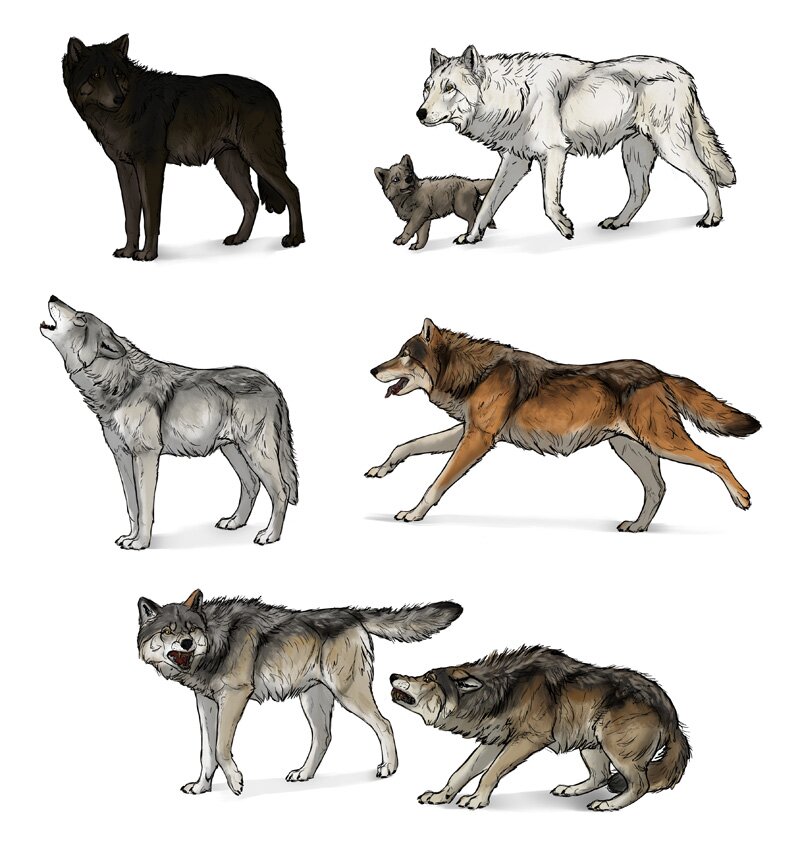
General Wolf Anatomy
Let's take a look at a simplified skeleton of the wolf first. It defines proportions of the parts of the body, so if you can draw it (even in a sketchy way), then you should be able to capture a wolf silhouette correctly every time. The most important feature here are the long legs, with long "hands" and relatively short "feet."
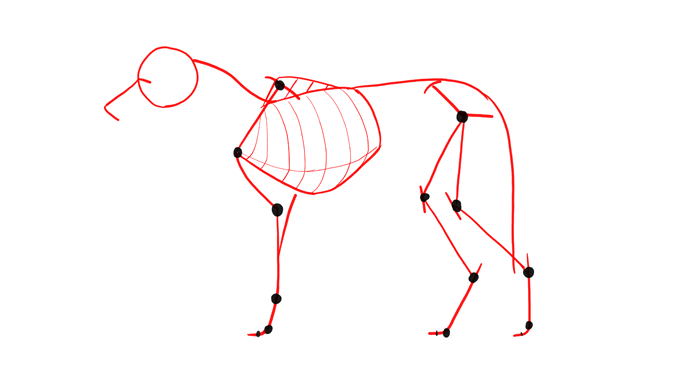
Wolves also have a very narrow chest, so they keep their forelegs close, with the paws often splayed outward. The hind legs have a special position too—they're usually more or less "cow-hocked," which means the paws are turned slightly outside as well.
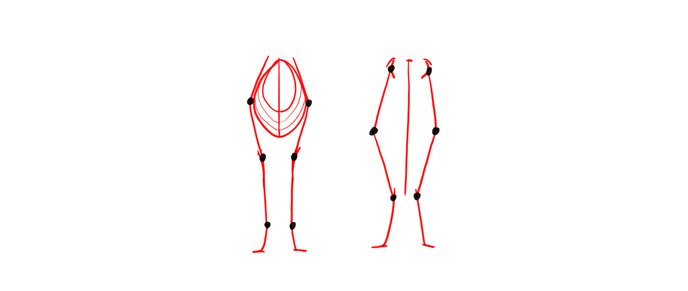
How to Draw a Wolf Step By Step
Wolves have a very characteristic silhouette that can be drawn in a simplified way, without paying too much attention to the anatomy. Start with a long, rounded rectangle for the body…
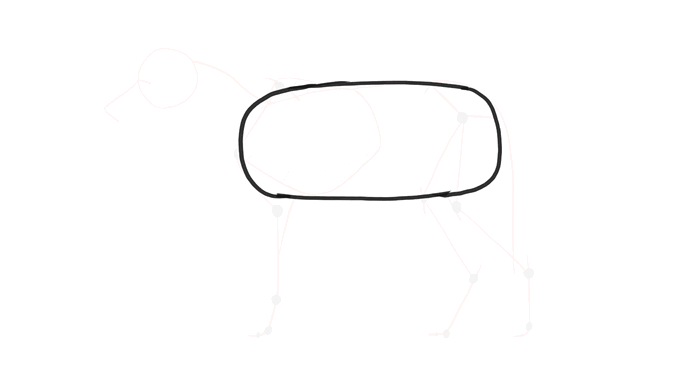
… then elongate its front to create a thick, fluffy neck. Don't draw its tip too high over the body!
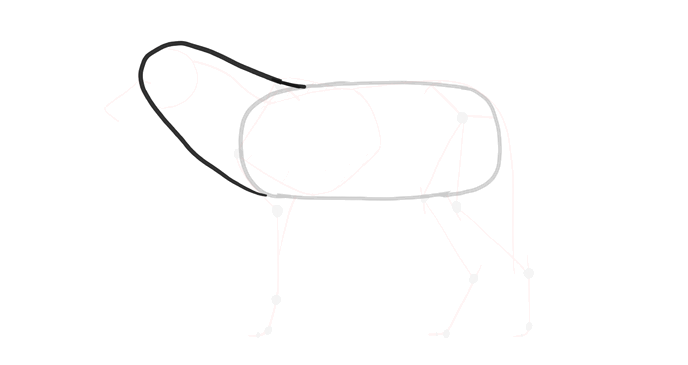
Add the legs. Their length is very important.
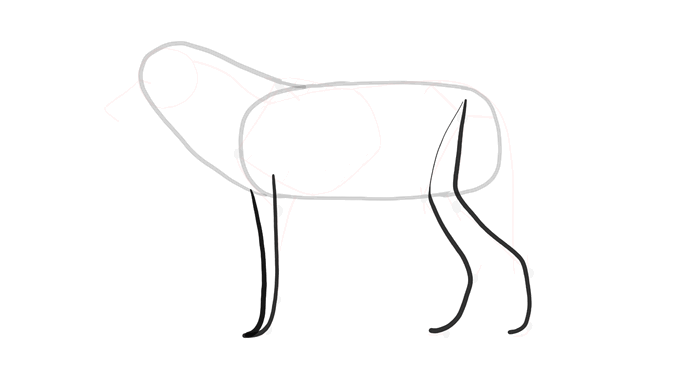
Add the long muzzle and the cheek.
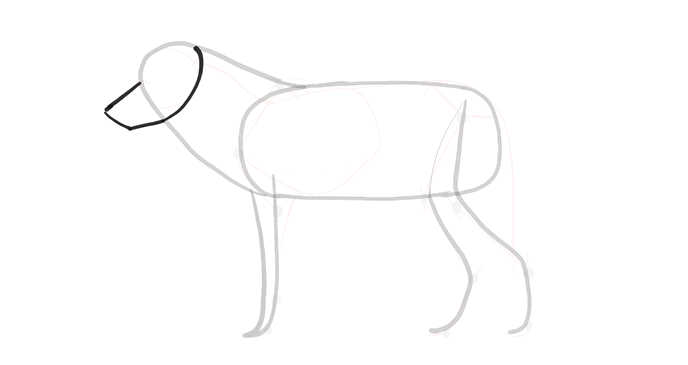
Add the ears and the tail. The tail should reach the heels, and it's usually kept straight, with only very subtle curl allowed.
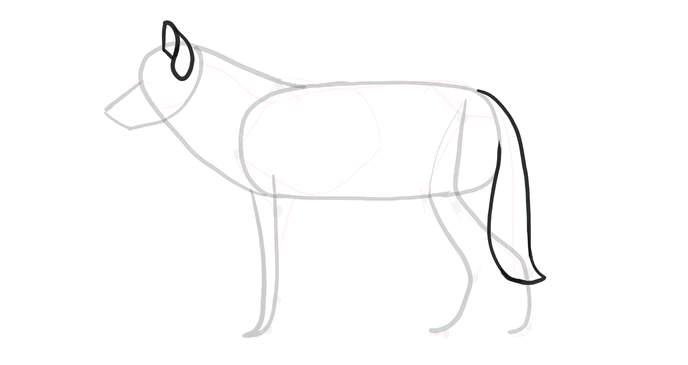
Add the paws and the details of the legs.
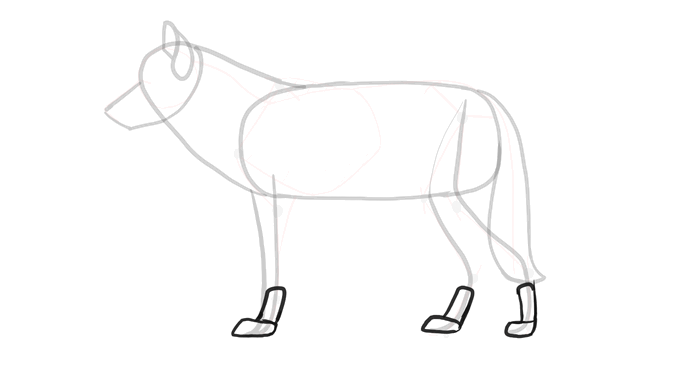
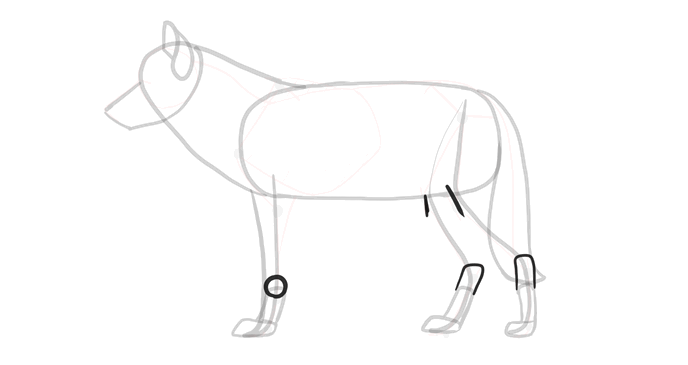
Draw a bean-like shoulder and half-circle-like thigh.
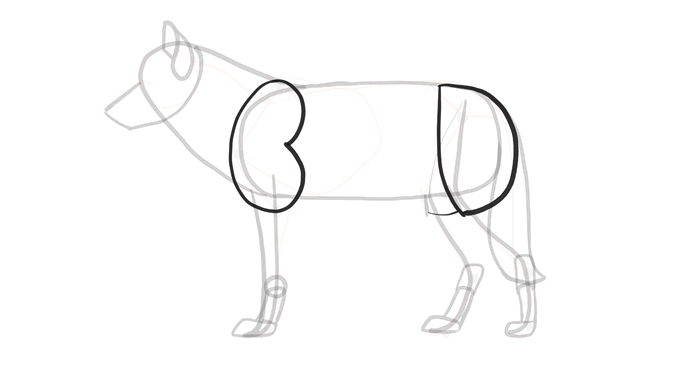
Add some body to the legs, connecting gently the paws to the shoulder and thigh.
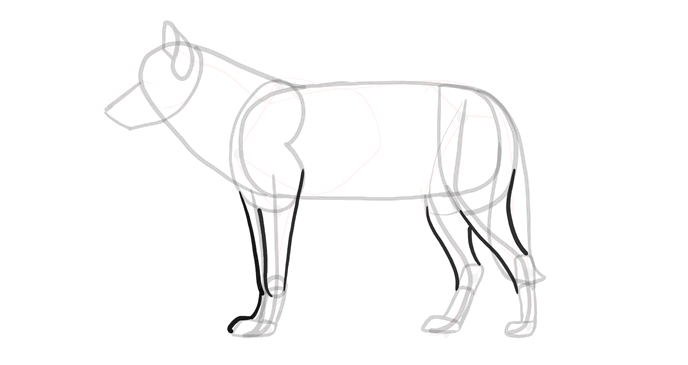
Finally, finish the silhouette by adding a mane and a shoulder cape.
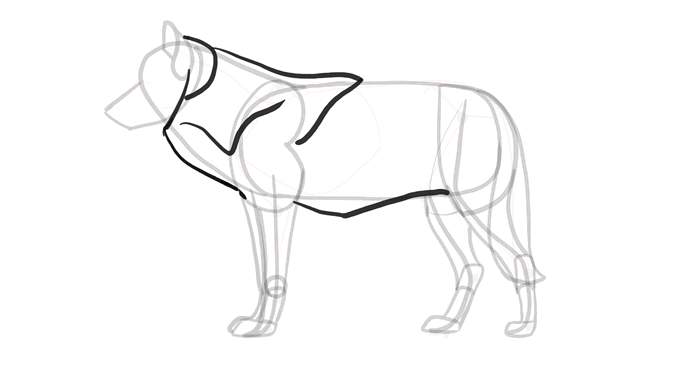
How to Draw Wolf Paws
Wolf paws look quite long, with the middle fingers/toes being so much longer than the one on the outside. The claws are non-retractable, so they wear out and therefore shouldn't look too sharp. Just like in felines, front paws have a dew claw ("thumb", a), and a pisiform pad (a protruding bone on the other side of your wrist, b). Hind paws have only four toes and no dew claws.
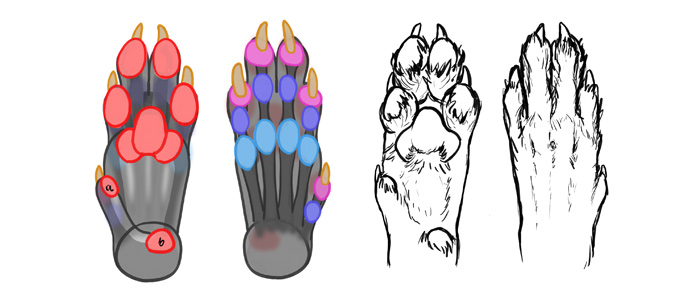
To draw the paws, start with general lines describing their position. These lines should be based on the skeleton.
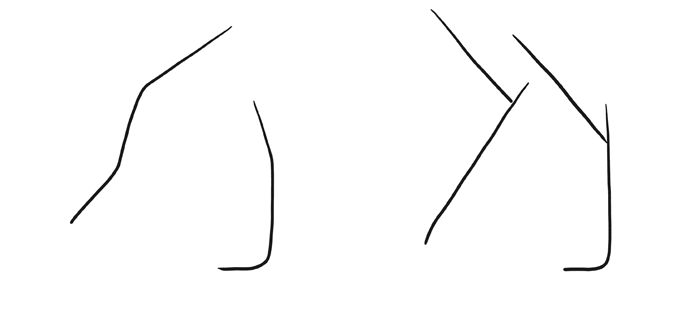
Draw two sections for each paw: the padded part and the bony part. Wolves are digitrade, which means they walk on their fingers and toes, so that's how you can imagine it to create a right pose. The forepaws are often larger than the hind ones. Remember about keeping the right perspective.
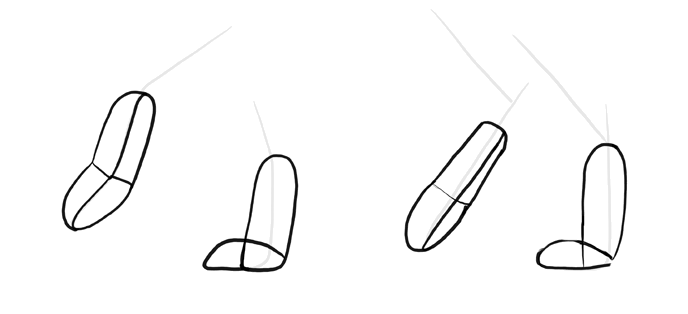
Draw the fingers and toes, imagining they're little sacks filled with something heavy.
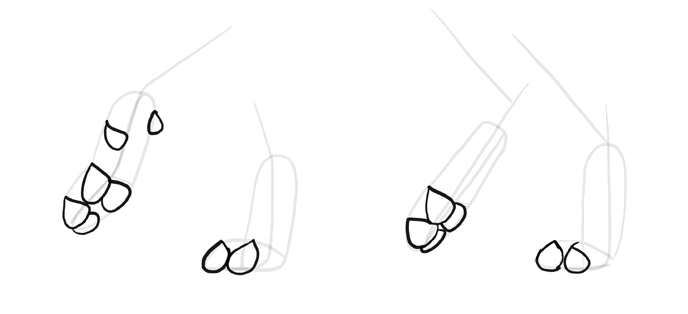
Reveal the bottom of each paw, and add a bigger "sack" on the back.
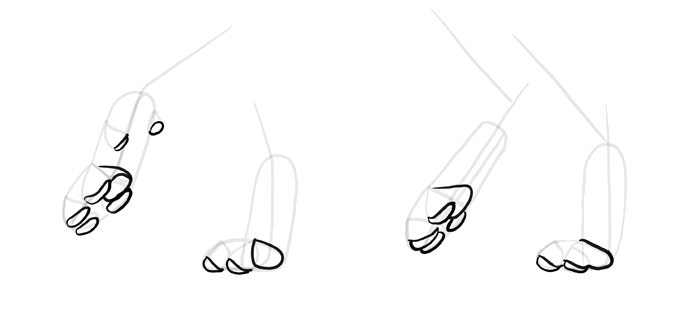
Add a slightly curved claw to each finger and toe. Remember to keep them blunt!
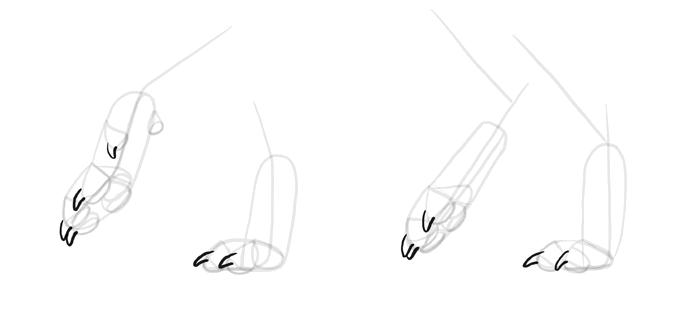
Finish the paws by covering the pads with fur. Wolf paws are often drawn as very skinny, with an exaggerated anatomy, to make them visibly different from feline paws. However, it's not necessary—"flat" elongated paws with very long fingers in the middle are enough for a wolf look.
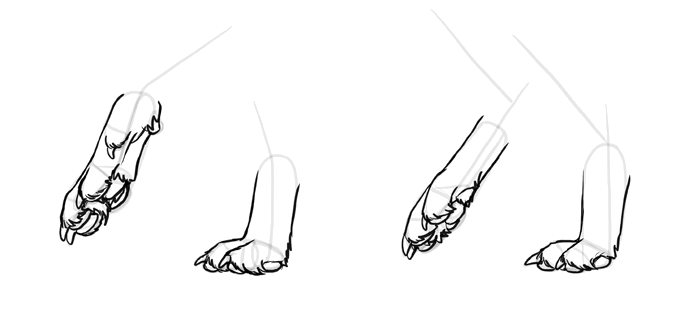
How to Draw a Wolf Head: Front, Profile & in Perspective
We all know that wolves have long muzzles and pointed ears, but if you want to draw a realistic wolf head, you need to know more than that. There's a lot of steps in this process, but you only need to follow me directly once—later you should be able to find your own personal "shortcuts."
Let's start with a line showing the direction of the muzzle and a line showing the position of the eyes.
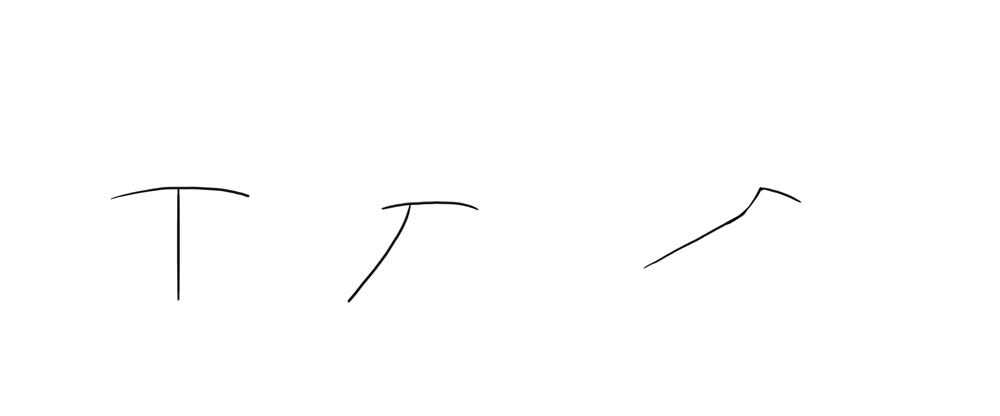
Add the tip of the muzzle. Remember to use perspective here.
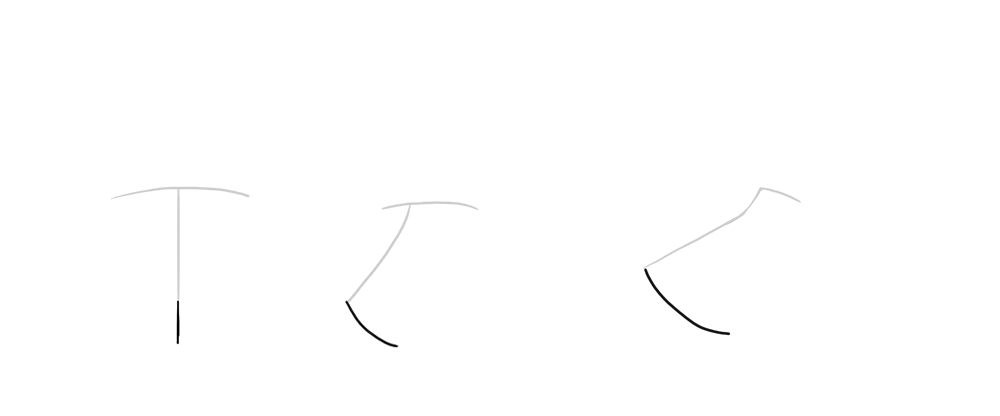
Close the shape of the muzzle with a round line.
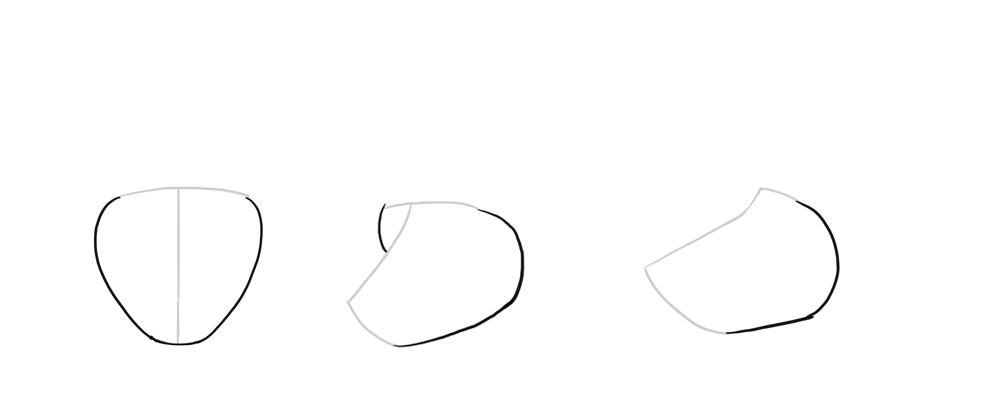
Add the rest of the skull. Imagine a big, flattened sphere attached to the muzzle.
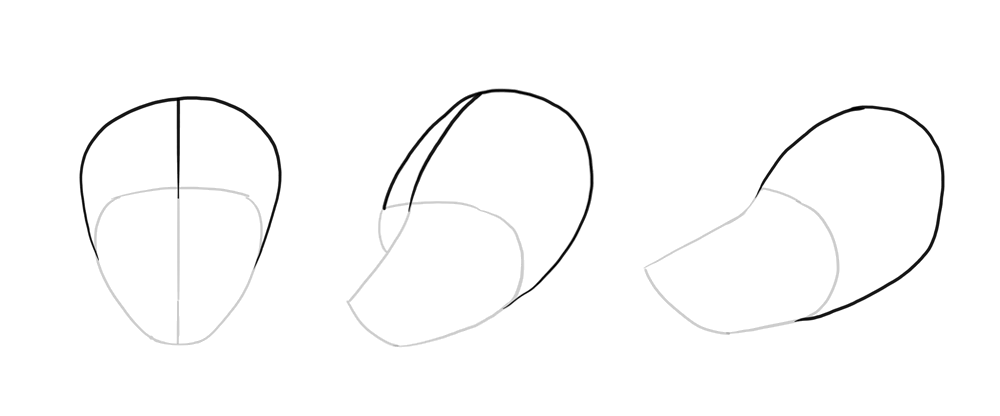
Draw the actual muzzle, using a form of a sack. It should be longer and narrower than in cats.
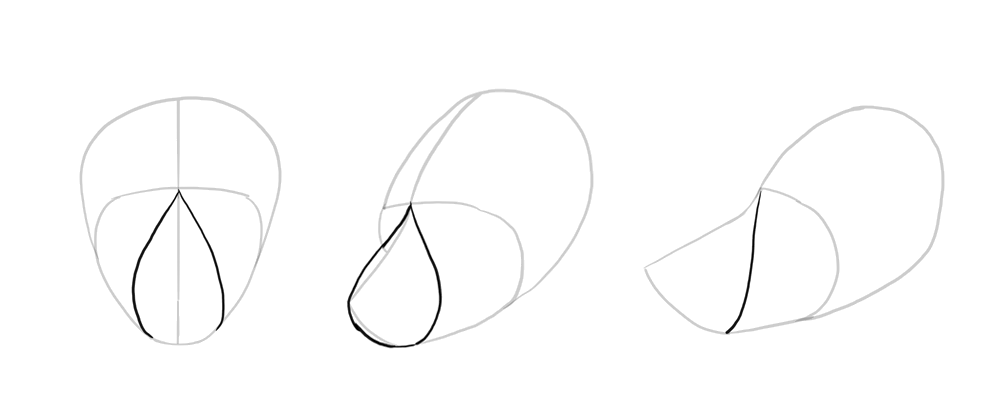
Divide the muzzle into thirds, then divide the upper third into halves. You don't need to measure them perfectly—just remember that this line on the top should be quite far from the tip of the muzzle.
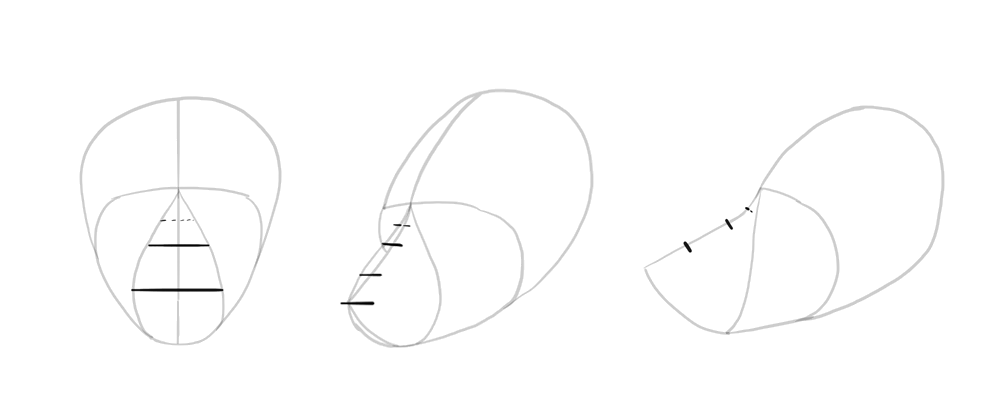
Add huge panda-like patches where the eyes will be. Subtly connect them with the muzzle.
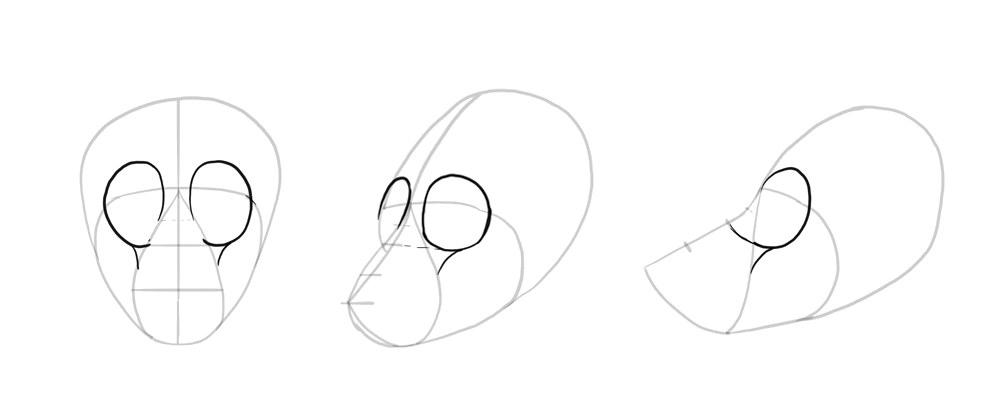
Create holes for the eyes with this simple curved line.
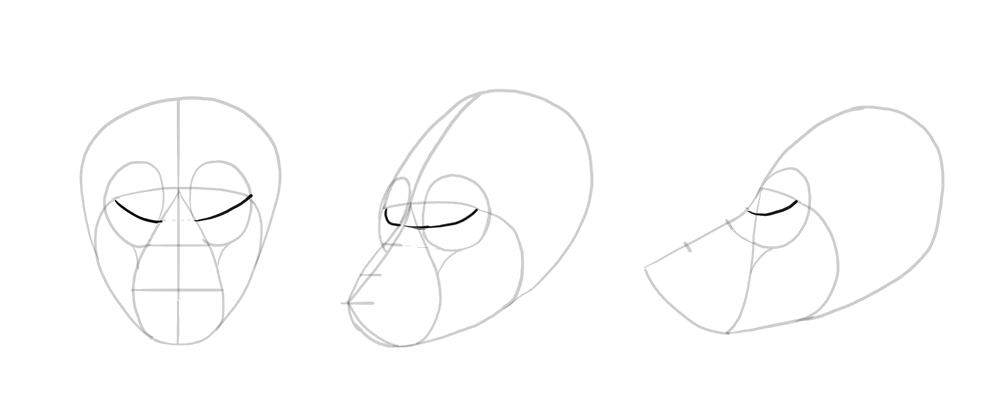
Add the forehead.
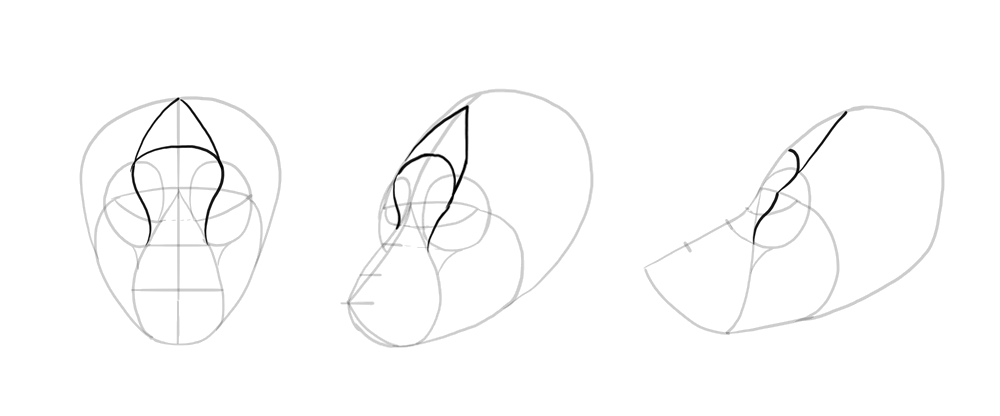
Place the eyes in the triangular areas.
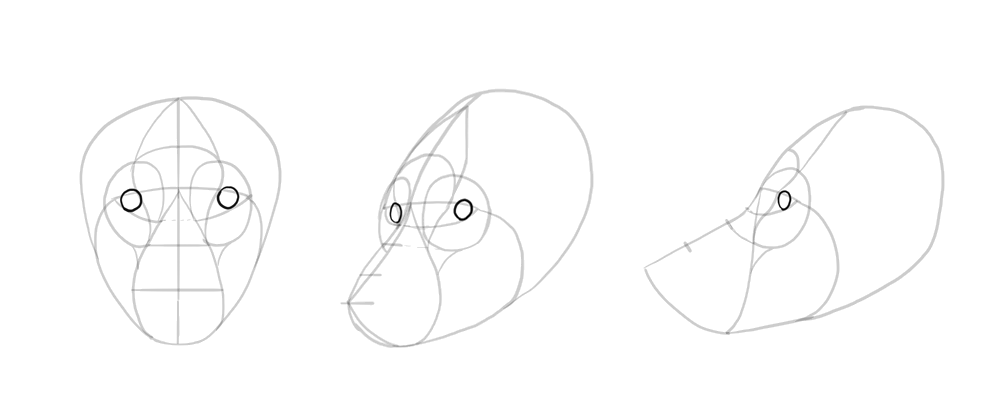
Add some features to the eyes.
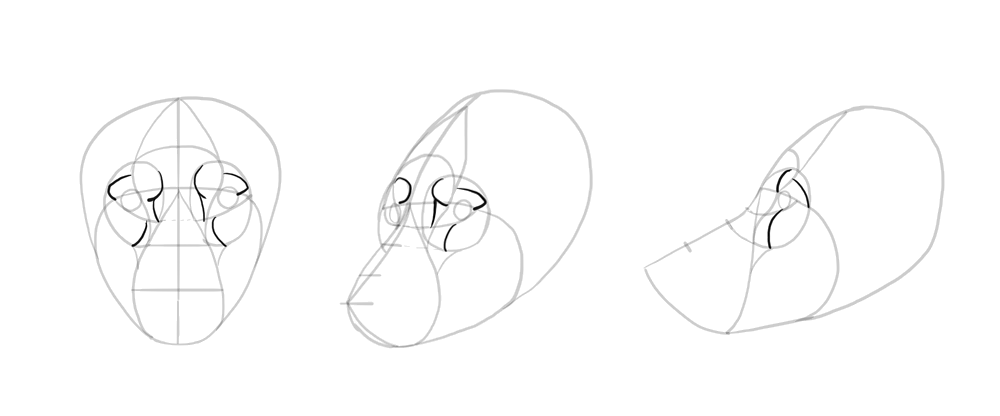
Draw the nose and the lips. The nose should be quite big. Notice how thin the chin is!
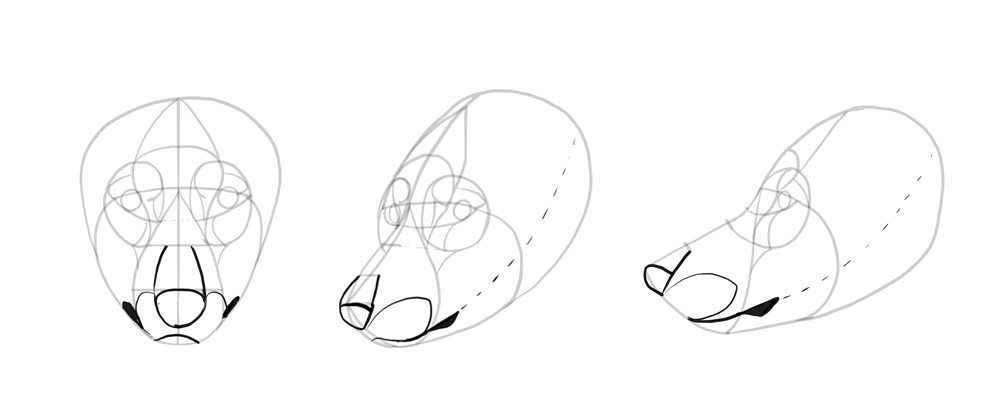
Time for the ears. Surprise here—they're actually not pointed! Keep them long but rounded.
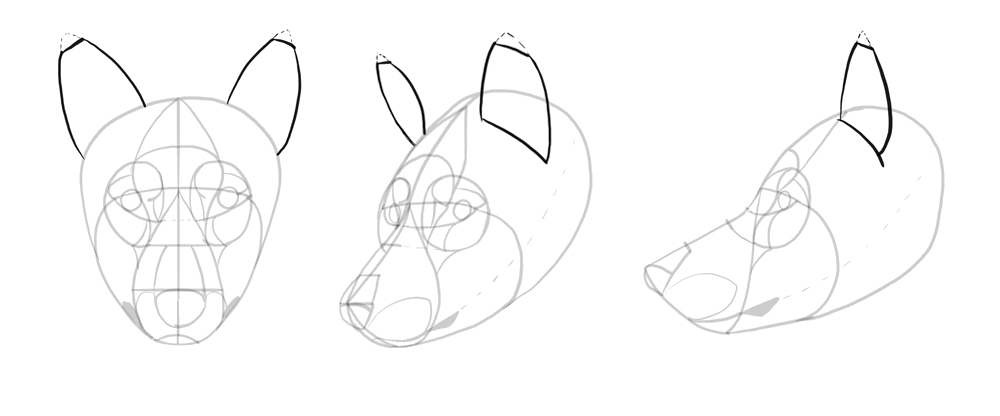
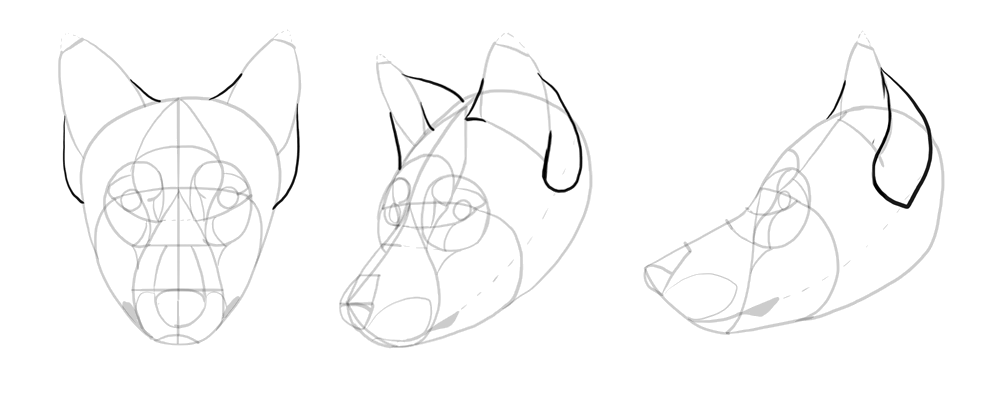
At this point, your wolf should look already like a wolf, just in its summer coat. Let's give it a more classic look by adding the mane.
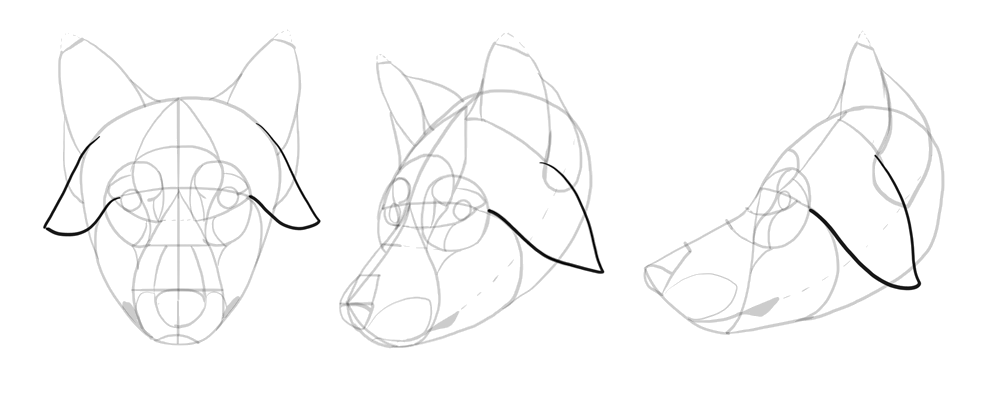
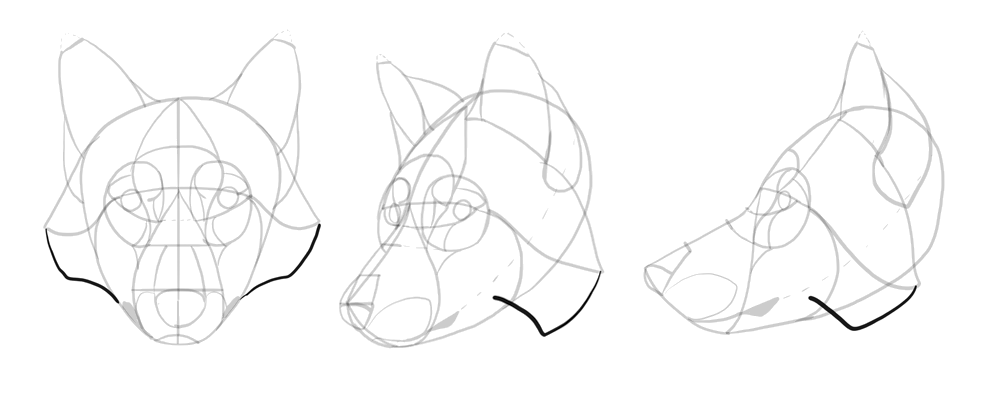
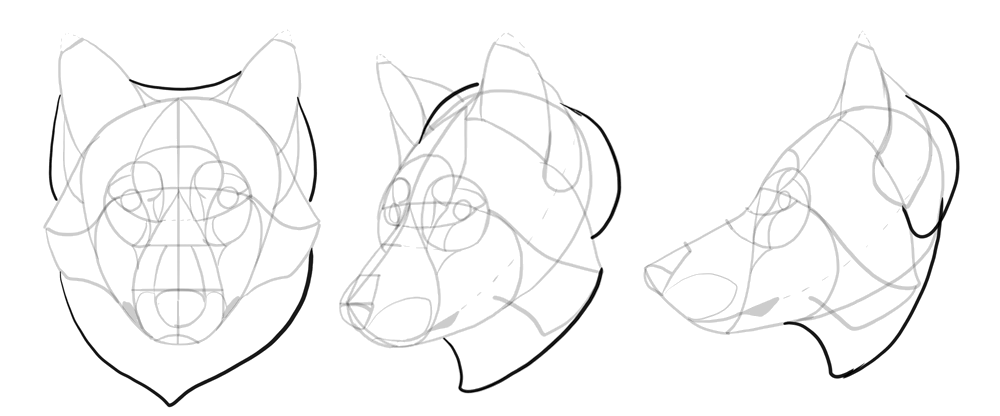
Let's add the details now. The eyes have a very dark outline and they're covered at the top with "eyelashes." The pupils are round.
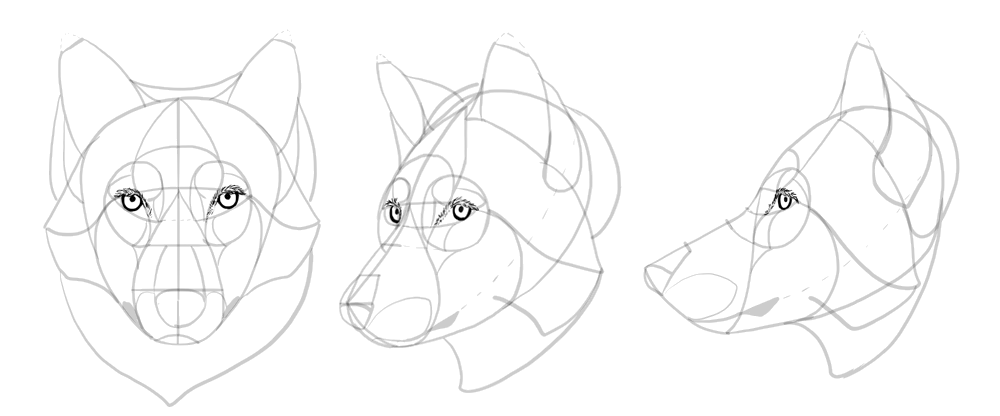
The classic "almond shape" of the eyes is achieved by adding the dark outline.
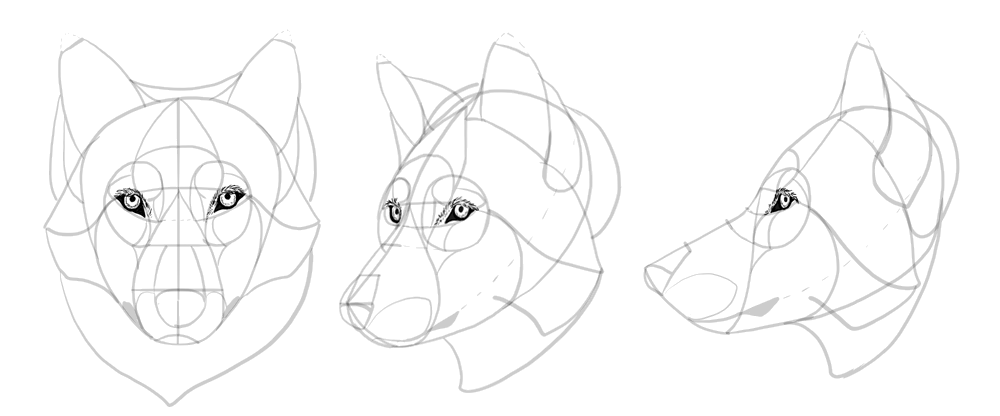
The fur around the eyes is very important, because it creates a characteristic wolf glance. These patches are as important as our eyebrows!
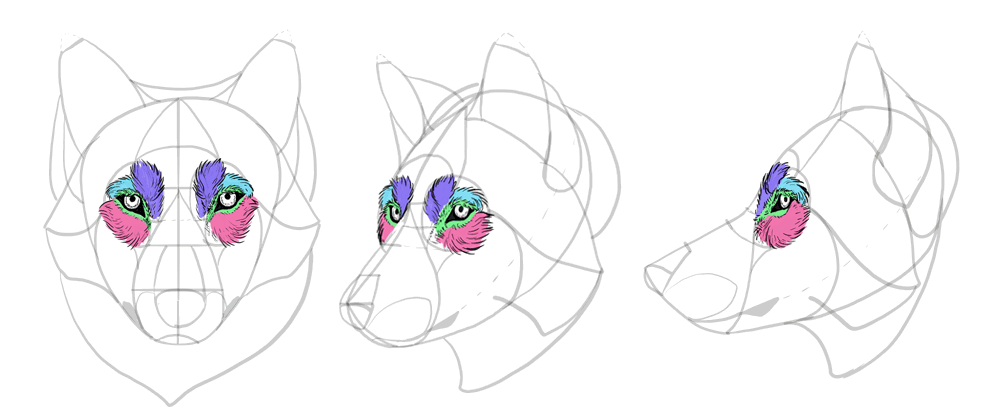
The nose is quite flat in the front, with big holes and a wide back.

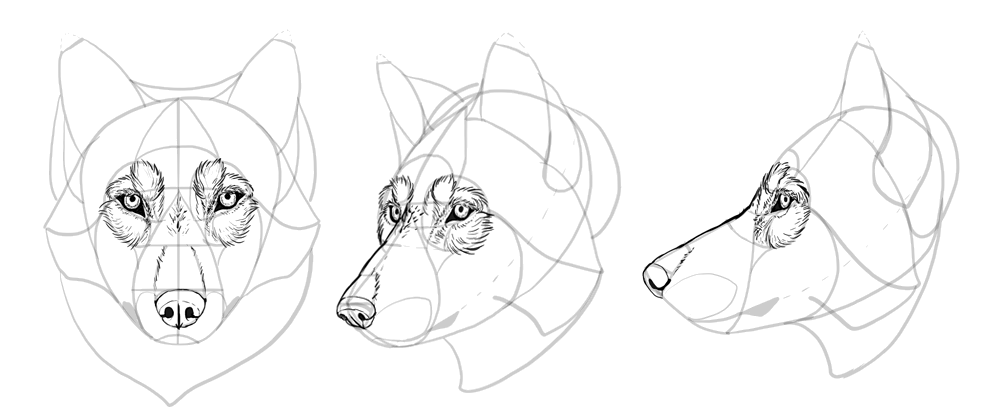
Wolves have whiskers, too! The corner of the lips should be placed near the eye level.
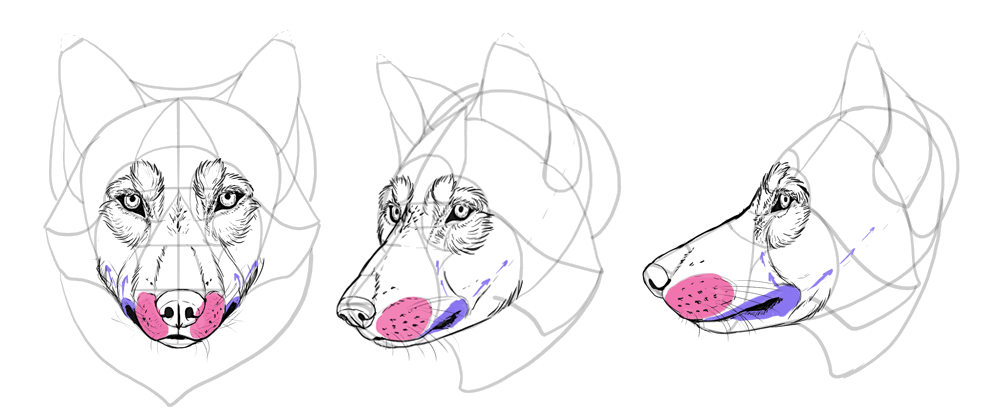
If you want to draw a wolf quickly, you can just add fur everywhere. But if you want to achieve a realistic look, use my guide. Keep in mind the ears are always very fluffy inside.
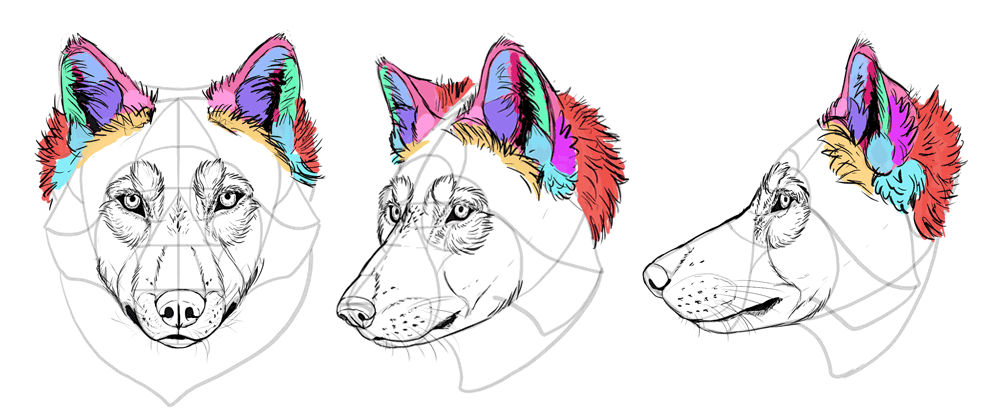
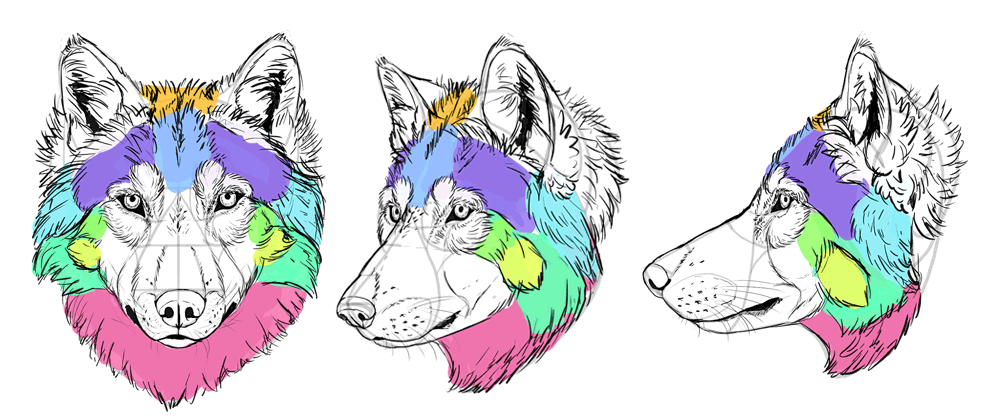
When you finish your drawing, accentuate the most important parts with darker lines—especially the area around the eyes. This will stress the typical proud look of a wolf and will let you avoid drawing the curious eyes of a dog instead.
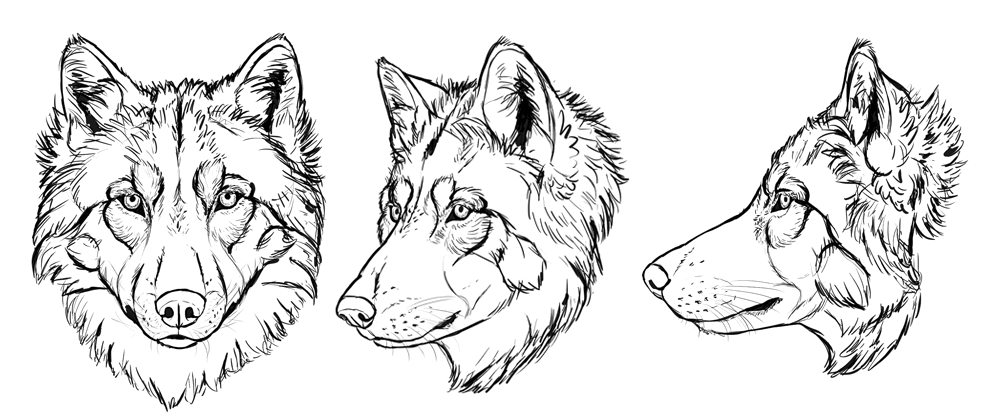
Wolf Expressions
Wolves are social animals, and they have developed a variety of facial expressions to let their packmates know how they feel. We can use them in drawing to make our wolves more realistic.
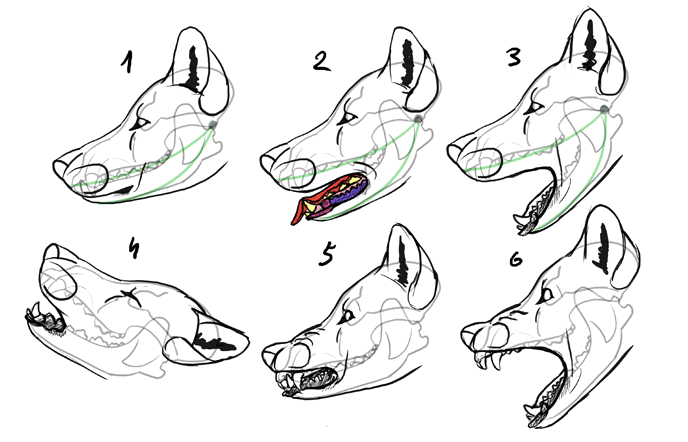
- This is a normal state. Pay attention to the jaw joint and how the mouth covers the teeth.
- This is a relaxed state. The animal may be panting after some physical effort, it may "smile" this way, but sometimes it also means the animal is nervous. Again, take a look at the jaw joint. The lower teeth are only partially visible because they're covered with a characteristic wide, bumpy lower lip (only canines have this structure).
- This is a wolf opening its mouth in a relaxed way, for example to eat something. Notice how loose skin of the mouth still covers the upper teeth.
- This is a howling wolf. Imagine it as a wolf "duck-face"—the lips are contracted to create a small passage for the air in the front.
- This wolf is angry or just wants to look intimidating. Although the jaws are closed, it can show its teeth by pulling up the lose skin of the mouth (along with the nose). The upper gums can be visible, but just in the front. Notice wide open eyes!
- This is the same state with the mouth open. Compare it with no. 3.
Additional note: "angry" state can be turned into "fearful" state just by putting the ears back.
How to Draw Wolf Fur
A "one-piece pajama" skin is what makes felines look cat-like. A wolf can be created by following some other rule: a special direction of fur over the body. It may look complicated at first, but if you draw it a few times, you'll see it's quite easy to remember.
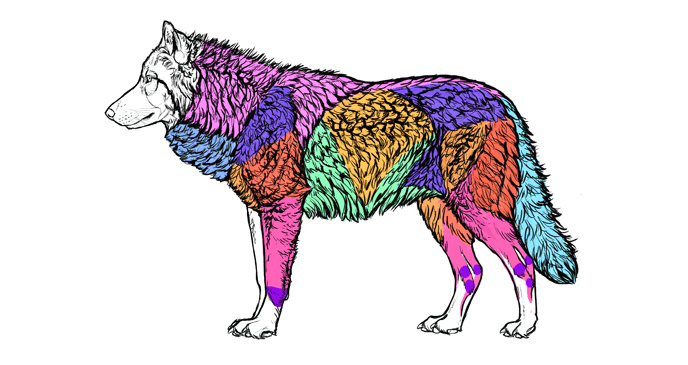
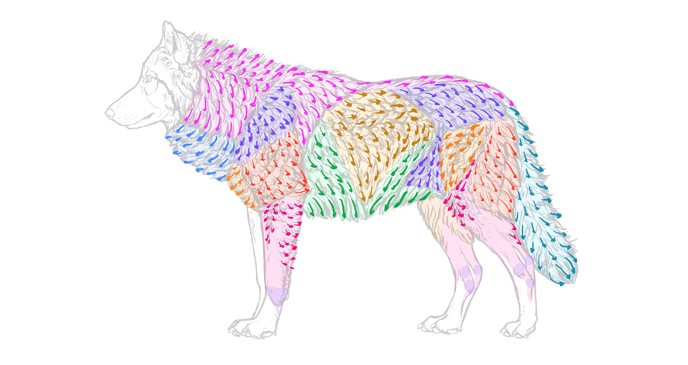
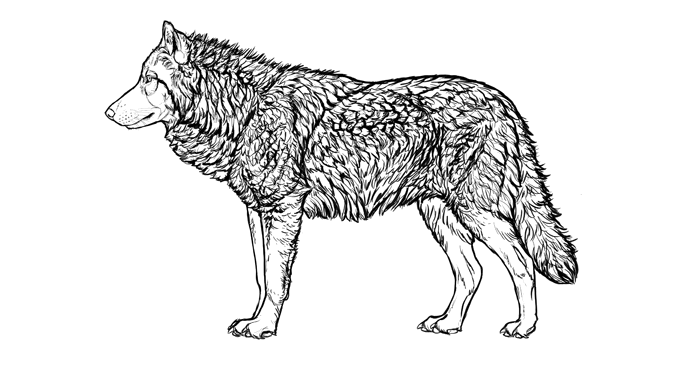
Of course, you don't need to draw all the strands every time. Just use the rules to create outlines of all the areas. The most important elements that should be stressed are the neck mane, the shoulder cape, the "butt cape," and the bushy tail. The rest can be stylized in your preferred way. In fact, if you outline the most important areas, you may not need to draw the rest of fur at all!
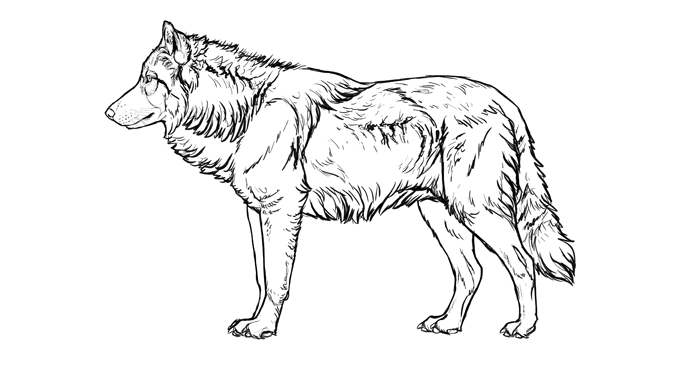
Wolves look very intimidating when they're so furry, but they're not always this way. Their summer coat is less impressive, making them more similar to a German shepherd. The areas of fur are still visible, but you can draw them with subtler lines.
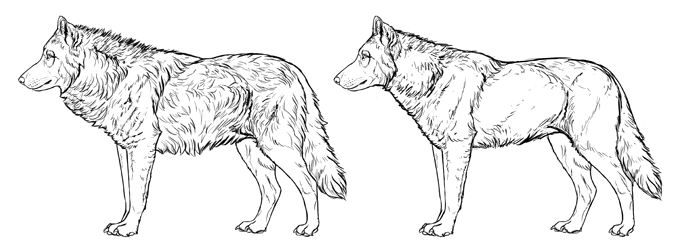
Wolf Colors
Wolves can have a variety of colors, but they generally follow a certain rule of coloration. The underside is bright, white or creamy, then there's a medium colored area in the middle, and then it meets a dark top. There's often a highly saturated area right below the dark top. The most important areas of fur are outlined in a contrasting way. In the face the colors may accentuate the facial features we've talked about earlier. The tail often has a darker tip, and there's a precaudal gland in the upper half, creating a patch of dark hair, no matter how light the rest of the pelt is. The nose, paw pads, and claws are always dark. The eyes are usually yellow, brown, or orange—only pups can have dark blue eyes.
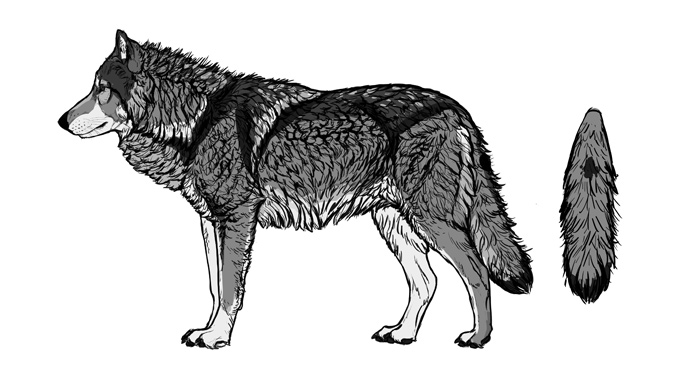
Here's a few popular color variations, with white being reserved for the Arctic Wolf only. You can modify certain elements to your liking (e.g. add a dark tip of the tail) as long as you stick to the general rules described above. Keep in mind that pups are always born dark and without any markings.
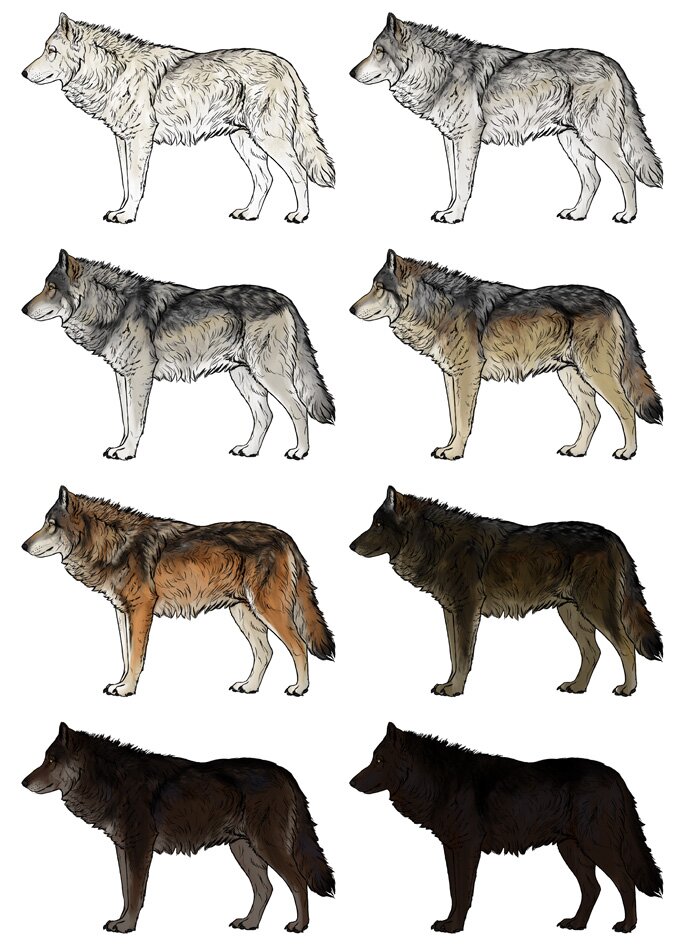
Many color variations can be created just by changing the contrast of the colors:
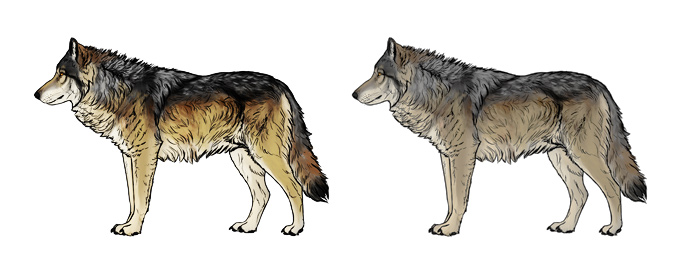
Common Mistakes
Now, don't get me wrong—you don't need to draw realistic wolves every time, and there are many fantastic styles you can use to draw these animals. However, make sure your stylization is intentional and not based on ignorance. You can recognize a wolf in the picture below, but it's full of mistakes. Each of them can be used in your drawing, but only if you have a reason for it (for example, short muzzle can be good if you want your character to look cute and friendly). Let's analyze them one by one:
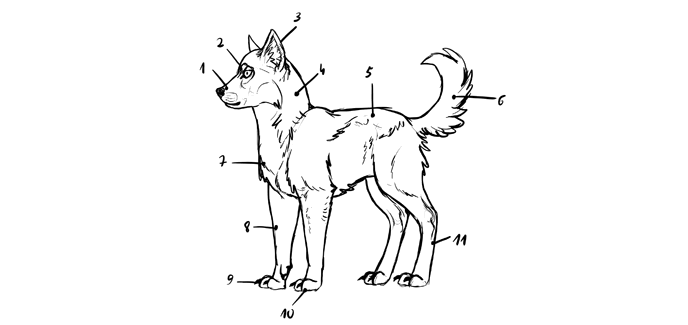
- Too short muzzle: long muzzles are important canine features
- Too big eyes: the bigger the eyes, the smaller the animal seems
- Pointed ears
- The head is kept unnaturally high
- Too short body
- Pointed, curled tail
- Too wide chest
- Too muscular legs
- Sharp claws
- Round paws
- Too long feet: this is a feature of hoofed animals
Source: https://monikazagrobelna.com/2019/07/26/sketchbook-original-how-to-draw-wolves/
Post a Comment for "Eays to Draw Wolfs Easy to Draw Wolves"